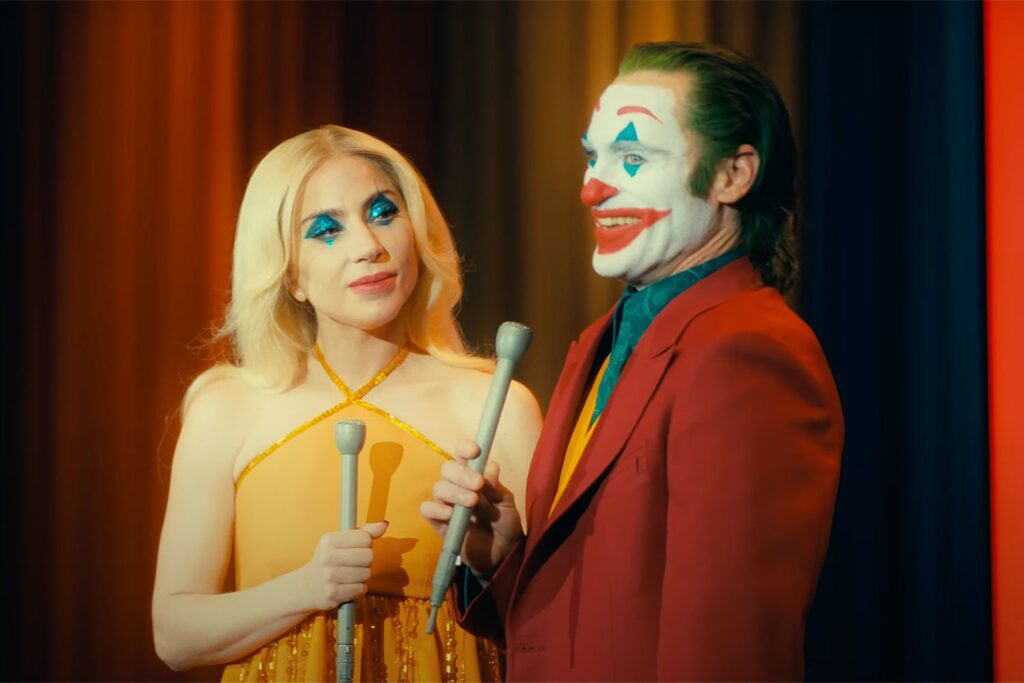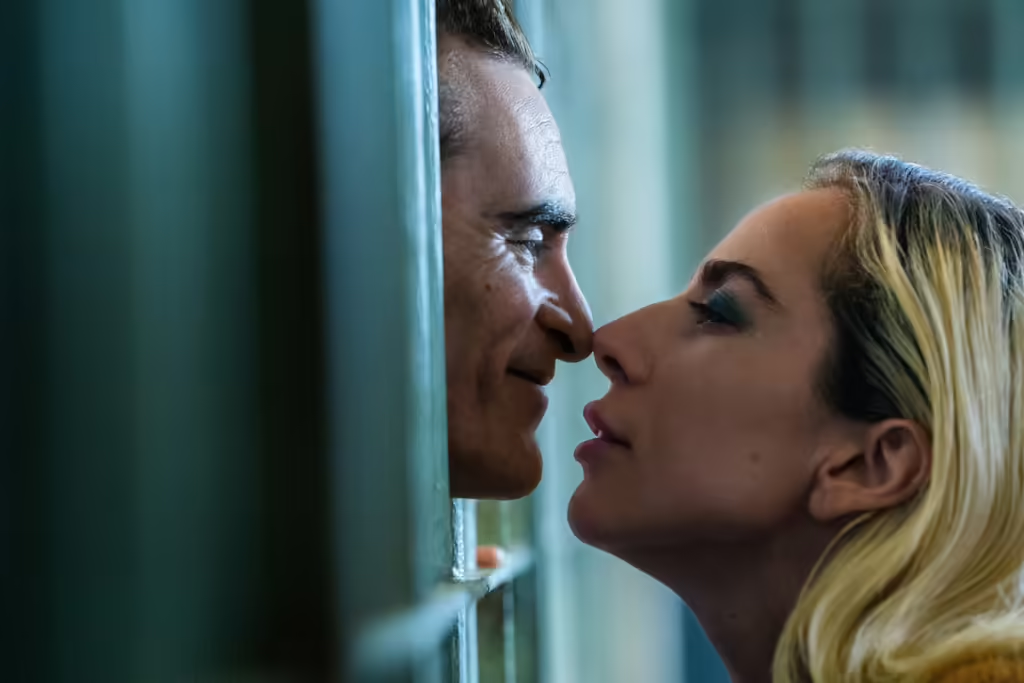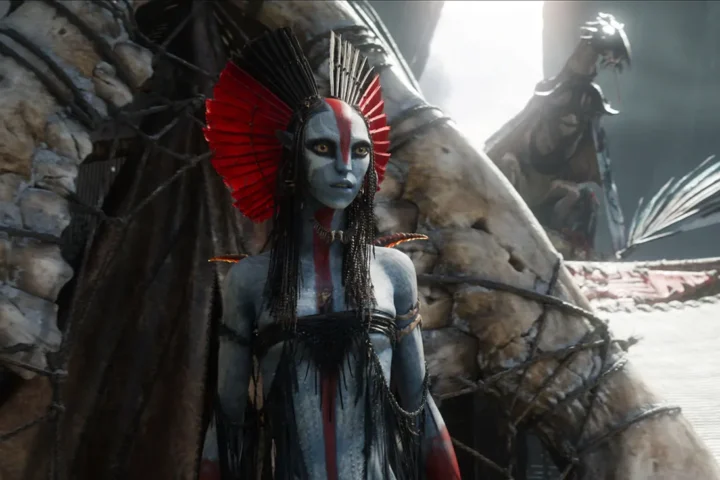When Todd Phillips unleashed 2019’s $1 billion global hit Joker on the world the reaction was intensely polarized—passionate devotees plugged into the picture’s meticulous, retro sleazy New York milieu and tortured anti-hero Arthur Fleck, a lost soul mustering an alter-ego vigilante avenger. Others called the film’s grindhouse style Scorsese-lite, alleging it irresponsibly drew an uneasy equation between mental illness and violent impulsivity. Both perspectives spoke to the character’s transcendence of his DC comic origins, the revisionist Phillips’ discarding the notion of Batman’s arch nemesis in favor of a nihilistic social provocation.
Eleven Oscar nominations largely damned the controversy, and star Joaquin Phoenix nabbed the Best Actor trophy for his powerfully idiosyncratic and emotionally vivid evocation of an cast off underdog experiencing a psychological break, or perhaps finding his power, in a torrent of folkloric Gotham retribution, at once empathetic and terrifying.
Five years on Phillips and Phoenix are back with their resident madman and his curious sequel, Joker: Folie à Deux (“madness for two”), an odd hybrid both continuing the first film while blowing it off the map. No, Phillips and co-writer Scott Silver do not send Arthur Fleck/Joker on another killing spree in an attempt to top the first film. Now that we’ve gotten expectations out of the way, can we judge the film on its own merits? It’s a dark, claustrophobic experience that gives the middle finger to notions of fan service and entertainment (did I mention it’s also a musical?) yet one that has its own pitch black integrity and is far better than you have heard.
There are two films happening in Joker: Folie à Deux (three, really) and the principal plot finds Phoenix’s Arkham institutionalized Fleck about to stand trial for his Joker killings in a bid to plead insanity—doctors and his caring lawyer (a workmanlike Catherine Keener) believe he’s got two personalities and that meek Fleck isn’t actually the criminal Joker, a creation brought on by years of systemic abuse. Is he or isn’t it? Will the insanity defense “work” and land Arthur in a hospital?
Part of his treatment involves a musical therapy program where he meets fellow patient Lee Quinzel, played by an appealing Lady Gaga, a pyromaniac obsessed with Fleck’s Joker who flatters him by telling him “I must have seen that TV movie about you more than twenty times,” while giving him, for the first time, the love and sex of a woman, which proves a powerful escape.

That escape is one into music, and both Gaga and Phoenix sing more than 15 songs throughout the picture, largely as twisted romantic imaginings, and most from the classic American Songbook. You might call it a jukebox musical, but one built on some of the best songs ever written, including “That’s Life,” “Get Happy,” “Gonna Build a Mountain,” “What the World Needs Now is Love,” “Bewitched, Bothered and Bewildered,” “Close to You,” “That’s Entertainment” and Phoenix’s terrific Jacques Brel-penned “If You Go Away,” figuring prominently near the picture’s conclusion.
For Gaga, it’s an opportunity to do both raspy, live character interpretations (she makes sure Lee doesn’t sound like the one and only Lady Gaga) as well as her expected polish and belt in some of the more elaborately staged showstoppers. Phoenix, for his part, isn’t much of a crooner and while his live singing isn’t always that pleasant to listen to, it’s got a fascinating rawness, as if he’s struggling to get his voice out. And that’s likely deliberate given Arthur’s own inability to find his.
The emerging love story, juxtaposed with the routine trial that dominates the film’s middle act, sets Joker: Folie à Deux apart both thematically and tonally from what most audiences might expect—or have the patience for. Instead of the chaotic spectacle we may anticipate, the film is more introspective, posing a central question: Is the Joker persona a genuine manifestation of Arthur’s unraveling psyche, compelling him to commit atrocities behind the mask, or is it all a carefully crafted “act” of madness? This exploration of Arthur’s real identity versus his artificial one is the movie’s true core.
Lee is deeply obsessed with with the Joker, but her affection doesn’t quite extend to Arthur himself. “We’re gonna build a mountain,” she tells him, but the tragedy for Arthur is that she’s drawn to the Joker—the larger-than-life figure of chaos and power—not the vulnerable, meek man beneath the mask. Arthur, however, misinterprets this, believing she loves his flawed, outcast self. This tension—the allure of falling in love with an image of fame and consequence while disregarding the human reality—is a powerful theme. What happens when the Joker mask slips? Can Lee love Arthur for who he truly is? Does she even want to? It’s the same question behind such real-life notorious figures—would women still be drawn to someone like Scott Peterson if he were exonerated?
Joker: Folie à Deux was met with criticism at this year’s Venice Film Festival—where its predecessor took home the top prize in 2019—and the backlash buzz has only increased. But the film’s rejection of crowd service shouldn’t be the standard by which it’s judged. Had Phillips and Silver taken a more predictable approach in the spirit of, perhaps, Bonnie and Clyde or Natural Born Killers, they might have given their fans a more entertaining ride. Instead they venture into darker territory, resulting in a film that feels divided: its courtroom dynamics (arriving nearly an hour in) derail momentum, while its more intriguing love story gets interrupted. The movie really struggles to find balance between daring ambition, function and entertainment.

The Arkham sequences are largely informed by soliloquy-like musical interludes and an expected parade of brutality. As on the outside, Arthur is once again the target of abuse, subjected to the routine cruelty of the guards, led by a solid but underutilized Brendan Gleeson. These scenes are perfunctory. Yet despite such mechanics, the film comes alive when Lady Gaga and Joaquin Phoenix share the screen. Their dynamic is mysterious and invested, and Phillips would have done well to focus more on them, giving Gaga more to sink her teeth into; some of this may be on the cutting room floor.
Phoenix expectedly gives us more of what won him the Oscar, this time with heartbreak but largely minus the novelty and show-stopping broadness, save an amusing bit in court where he represents himself in a drawling, southern lawyer caricature while in full Joker make-up and grilling his terrified former friend Gary Puddles (Leigh Gill). But for most of the picture he remains in pathetic Arthur mode, which extends to the film’s sure-to-be-controversial final scene. That scene, and much of the film, seems determined to shatter the expectations of those who loved the first film’s Joker, who sparing real-world appearances this time (save the fantasy musical moments), and is presented as an avatar that Phillips and Silver underscore as the malignant product of a disturbed person’s mind.
Phoenix, with grand empathy, plays that pain to the hilt and gets maximum pathos in a richly accomplished turn. Fans expecting the Joker’s return to anti-heroic chaos will be surprised that the writers no longer seem to be celebrating the cult of personality that captured both Gotham and movie audiences. Instead, they are almost turning a lens on a culture that reveres such terrorism on both Arthur and his enemies, and showing us the toll it’s taken on the man. And that’s an intriguing commercial gamble, to dismantle their movie icon, largely sans his entertainment value and declare his existence toxic, pointing the finger at his cult of acolytes. Here’s looking at you, audience!
As an actress, Gaga has already proven her range—her Oscar-nominated performance in A Star Is Born and memorable 2021 House of Gucci viper (which was unjustly overlooked by the Academy) were movie star turns and then some. Here she effortlessly embodies a sidelined character that’s alternately glamorous and dressed down, a beguiling manipulator of nebulous intentions which may or may not include love. Her performance here is one largely shot in close-up, often looking naturalistic (except for the big musical numbers) as she leans into the camera, widens her large eyes and really shows us Lee’s light as well as darkness.
Most audiences will reject Joker: Folie à Deux on the grounds that it lacks the maniacal thrills of the first film (despite a few violent episodes) and in its grittily off-putting way refuses to entertain—odd, for a musical—or fall in line with a comic plotted universe (although Harvey Dent himself does show up at trial). And most young male ticket buyers will likely also tune out to throwback musical standards (Judy Garland, anyone?), audacious as they may be. Some will find its dark, insular story—both in the grimy Arkham environs and inside Arthur—to be tedious. Their loss.
But Phillips’ technically impeccable, $200 million film, gorgeously shot by returning DP Lawrence Sher and powerfully scored with sinister melancholy by Hildur Guðnadóttir (who won an Oscar for the first film) is an authentic vision of personal and romantic doom, and cannot be discarded for merely rejecting genre and audience expectations. It may not be in line for the coronation the first film received, but it achieves what it’s going for, whether we like it or not. I did.
3 stars



